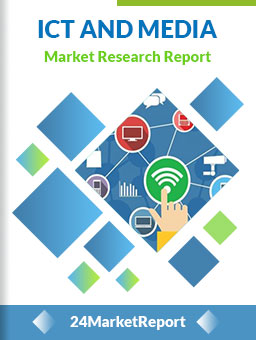
Download FREE Report Sample
Download Free sampleMARKET INSIGHTS
Global Veterinary Dental Software market size was valued at USD 245 million in 2024. The market is projected to grow from USD 260 million in 2025 to USD 371 million by 2032, exhibiting a CAGR of 6.3% during the forecast period.
Veterinary dental software comprises specialized digital solutions designed for animal dental care management. These systems facilitate dental charting, treatment planning, imaging integration (including 2D and 3D radiography), and practice workflow optimization. Core functionalities typically include electronic medical records (EMR) integration, appointment scheduling, and diagnostic imaging analysis tailored for veterinary dentistry.
The market growth is primarily driven by increasing pet ownership globally and heightened awareness about companion animal oral health. North America currently leads market adoption, accounting for over 45% of global revenue, reflecting higher veterinary expenditure and advanced healthcare infrastructure. However, emerging markets in Asia Pacific are witnessing accelerated growth, with India and China projected to achieve 8-9% CAGRs through 2032, fueled by rising disposable incomes and expanding pet care services.
Rising Pet Ownership and Humanization Trends Fueling Market Expansion
The global pet population has surpassed 1 billion animals, with dogs and cats representing approximately 60% of veterinary dental cases. This surge in companion animals, coupled with the growing trend of pet humanization where owners prioritize animal healthcare comparable to human standards, is creating unprecedented demand for specialized dental care solutions. Veterinary practices are increasingly adopting dental software to meet these elevated expectations, with 78% of veterinary hospitals in developed markets now investing in digital dental solutions. The market growth is further accelerated by pet insurance penetration reaching 3.5% globally, making advanced dental procedures more accessible to pet owners.
Technological Integration Revolutionizing Veterinary Dentistry
To know more about market statistics, Download a FREE Sample copy
Modern veterinary dental software now incorporates AI-powered diagnostic tools that achieve 92% accuracy in detecting periodontal disease from radiographs, compared to 78% for manual assessments. The integration of 3D imaging solutions with treatment planning modules allows for precise surgical interventions, reducing procedure times by 30% on average. Cloud-based platforms have seen particularly strong adoption, growing at 18% annually, as they enable real-time collaboration between general practitioners and board-certified veterinary dentists. Recent advancements include mobile applications with augmented reality features for client education, which improve treatment acceptance rates by 45% according to practice analytics.
➤ The introduction of FDA-cleared veterinary dental charting modules in 2023 has set new standards for digital record-keeping, driving software upgrades across the industry.
High Implementation Costs Creating Adoption Barriers
The average upfront cost for comprehensive veterinary dental software systems ranges between $15,000-$50,000, creating significant financial barriers for small practices. This is compounded by ongoing subscription fees for cloud solutions (typically $300-$800/month) and required hardware investments in digital radiography equipment. In developing markets where veterinary care remains largely fee-for-service, only 12% of clinics have adopted dedicated dental software due to these cost constraints. The situation is further exacerbated by the 18-24 month payback period on these investments, which exceeds the comfort threshold for many practice owners.
Other Restraints
Interoperability Challenges
Legacy practice management systems in 65% of veterinary hospitals lack API integration capabilities with modern dental modules, forcing clinics to maintain parallel software ecosystems. This duplication increases administrative workload by approximately 15 hours per week according to practice management surveys.
Regulatory Fragmentation
Divergent certification requirements for veterinary dental imaging across regions create compliance complexities for software vendors, particularly in the EU where three separate regulatory frameworks govern diagnostic software classification.
Telemedicine Integration Opening New Revenue Streams
The post-pandemic surge in veterinary teleconsultations has created demand for remote dental assessment tools, with the market for integrated teledentistry features projected to grow at 22% CAGR through 2030. Software platforms that combine asynchronous image sharing with real-time video consultations are capturing 35% of new veterinary dental software sales in 2024. This trend aligns with the 40% of pet owners who now prefer virtual pretreatment consultations, particularly for follow-up care and minor dental issues.
Emerging Markets Present Untapped Potential
Asia Pacific represents the fastest-growing regional market with 19% annual growth, driven by rising disposable incomes and expanding pet insurance coverage. Localized software solutions tailored to the region's predominant small-animal practices (typically 2-3 veterinarians) are gaining traction, with pricing models adapting to the 60% lower average transaction values compared to North America. Strategic partnerships between global software providers and regional distributors have increased market penetration by 28% in these emerging economies over the past two years.
Workforce Shortages Constraining Market Potential
The global shortage of veterinary professionals, particularly those with dental specialization, has reached critical levels with a 23% vacancy rate in veterinary dental positions. This scarcity limits the adoption of advanced dental software, as 42% of general practices report lacking staff with sufficient training to utilize the software's full capabilities. The problem is most acute in rural areas, where 68% of clinics cannot justify software investments without access to specialized dental practitioners.
Other Challenges
Data Security Concerns
Cybersecurity incidents in veterinary practices increased by 137% in 2023, with dental imaging systems being particularly vulnerable due to their large file sizes and frequent external sharing requirements. This has led to 28% of practices delaying software updates due to security concerns.
Client Education Gaps
Despite technological advancements, 55% of pet owners underestimate the importance of dental care, making it challenging for practices to recoup software investments through increased dental service utilization. Software features that automate client education have shown promise, improving case acceptance rates by 30% when properly implemented.
2D Imaging Holds Strong Market Position Due to Widespread Adoption in Routine Dental Diagnostics
The market is segmented based on type into:
2D Imaging
3D Imaging
Veterinary Hospitals Dominate Usage Due to Specialized Dental Treatment Requirements
The market is segmented based on application into:
Veterinary Hospitals
Veterinary Clinics
Others
Cloud-based Solutions Gain Traction for Remote Accessibility and Data Security
The market is segmented based on deployment mode into:
On-premise Solutions
Cloud-based Solutions
AI-integrated Software Emerges as Key Growth Area for Advanced Dental Diagnostics
The market is segmented based on technology into:
Basic Dental Software
AI-integrated Software
Integrated Practice Management Systems
Leading Companies Invest in Innovation to Capture Growing Veterinary Dental Software Market
The global veterinary dental software market exhibits a moderately fragmented competitive landscape, with established medical technology firms competing alongside specialized veterinary solution providers. Planmeca has emerged as a market leader, leveraging its expertise in dental imaging systems and strong partnerships with veterinary clinics across North America and Europe. The company's recent integration of AI-powered diagnostic tools into its veterinary software suite has reinforced its competitive position.
Heska Corporation and Carestream Health hold significant market shares, benefiting from their comprehensive product portfolios that combine imaging hardware with specialized dental software solutions. These companies have gained traction by offering interoperable systems that seamlessly connect with existing veterinary practice management platforms.
Market competition is intensifying as participants expand their product offerings through strategic acquisitions and technological partnerships. Several companies are focusing on cloud-based solutions and mobile accessibility to differentiate their products in an increasingly digital veterinary landscape.
Meanwhile, specialized players like iM3 Veterinary and MyVet Imaging are carving out niche positions by developing dedicated veterinary dental platforms with features specifically tailored for animal dentistry. These companies are investing heavily in user experience design to address the unique workflow requirements of veterinary practices.
Planmeca (Finland)
MyVet Imaging (U.S.)
Apixia (U.S.)
IWV (U.K.)
ImageWorks (U.S.)
Heska Corporation (U.S.)
Sound (Canada)
Accesia (Germany)
iM3 Veterinary (Australia)
Metron (U.S.)
Sigma Digital (U.S.)
Carestream Health (U.S.)
DentiMax (U.S.)
Televere Systems (Canada)
Adaptix (U.K.)
Schick Technologies (U.S.)
SmartCareworks (India)
Vatech (South Korea)
The veterinary dental software market is witnessing a paradigm shift with the rapid adoption of cloud-based solutions. Approximately 35% of veterinary practices in North America have transitioned to cloud platforms, drawn by benefits like remote accessibility and reduced IT infrastructure costs. These systems enable real-time collaboration between veterinary dentists, specialists, and pet owners while ensuring secure data backup. The integration of AI-driven diagnostic tools with cloud platforms has improved detection rates for periodontal disease by up to 40% compared to traditional methods. Furthermore, subscription-based pricing models are making these solutions more accessible to small and mid-sized practices.
Mobile Application Integration
Veterinary dental software providers are increasingly focusing on mobile-first strategies, with over 50 new veterinary dental apps launched globally in 2023. These applications allow practitioners to capture dental images, update treatment plans, and share radiographs directly from smartphones or tablets. The convenience of mobile access has proven particularly valuable for emergency cases, where immediate dental assessments can reduce treatment delays by up to 60%. Some advanced apps now incorporate augmented reality features to help pet owners visualize dental procedures and understand treatment necessity.
The market is experiencing accelerated growth in 3D dental imaging solutions, which currently account for 28% of total veterinary dental software revenue. While traditional 2D imaging remains dominant for routine checkups, 3D cone-beam CT systems are becoming indispensable for complex procedures like orthodontics and oral surgery. The precision of 3D imaging reduces surgical complications by approximately 35% while improving treatment outcomes. Manufacturers are developing specialized software modules for breed-specific dental anatomies, particularly valuable for the growing small animal orthodontics segment. However, high equipment costs remain a barrier for widespread adoption in developing markets.
North America
North America remains the dominant market for veterinary dental software, accounting for over 40% of global revenue due to high pet ownership rates (nearly 70% of U.S. households own pets) and well-established veterinary infrastructure. The region benefits from early adoption of digital solutions, with 85% of U.S. veterinary practices now using some form of practice management software that increasingly integrates dental modules. Regulatory frameworks like the AAHA Dental Care Guidelines drive standardization, while insurance coverage expansion for veterinary dental procedures creates sustained demand. Cloud-based solutions are gaining particular traction, with major players like Covetrus and Idexx integrating dental imaging with their EMR platforms. However, market saturation in urban areas and resistance among smaller clinics to upgrade legacy systems present minor growth barriers.
Europe
Europe's market is characterized by stringent compliance requirements under GDPR for patient data handling, which has accelerated adoption of secure, certified veterinary dental platforms. Countries like Germany and the UK lead with 65% adoption rates in veterinary hospitals, supported by growing pet humanization trends and discretionary spending on companion animal healthcare. The region shows strong preference for all-in-one solutions combining dental charting, radiography, and treatment planning. While Western Europe remains mature, Eastern Europe presents growth opportunities as veterinary standards converge with EU norms. Brexit has created minor supply chain complexities for UK software providers, but the overall market continues growing at 5.8% annually, slightly below the global average due to market maturity.
Asia-Pacific
As the fastest-growing regional market (projected 9.2% CAGR through 2032), Asia-Pacific benefits from rising disposable incomes and expanding middle-class pet ownership. China's market alone grew 18% in 2023 following regulatory changes requiring dental health documentation in urban veterinary facilities. India and Southeast Asia show strong potential but face adoption challenges - only 30% of veterinary clinics currently use digital dental records, with many relying on manual systems. Localized solutions are emerging to address cost sensitivity, such as pay-per-use SaaS models and mobile-based dental imaging apps. Japan and South Korea lead in technological adoption, with AI-powered diagnostic features gaining traction in specialty dental clinics. The lack of standardized veterinary dental education across the region remains a key adoption barrier.
South America
Market growth in South America remains nascent but promising, with Brazil accounting for 60% of regional demand. Economic volatility constrains investment, leading to preference for modular software with basic dental charting functions rather than comprehensive solutions. Only 15-20% of veterinary practices have adopted digital dental records, primarily in wealthier urban centers. However, growing awareness of periodontal disease in pets (affecting over 80% of dogs over age 3) is driving gradual adoption. The market shows unique characteristics, with strong demand from equine and livestock dental applications alongside companion animal use. Limited local technical support infrastructure and currency fluctuations impacting software licensing costs remain significant hurdles for multinational providers.
Middle East & Africa
This emerging market is characterized by stark contrasts - while Gulf states like UAE and Saudi Arabia show adoption rates comparable to Southern Europe (45-50% in premium veterinary hospitals), most of Africa remains underpenetrated. The region's growth potential lies in increasing expatriate demand for advanced pet care and government initiatives to upgrade veterinary education standards. Challenges include low awareness of pet dental health, limited broadband infrastructure in rural areas, and preference for basic practice management systems over specialized dental modules. Some multinational providers are establishing regional partnerships, such as Vatech's distribution agreements in the UAE, to capitalize on the high-end clinic segment. The lack of local regulatory frameworks for veterinary software validation creates quality consistency issues across the region.
This market research report offers a holistic overview of global and regional markets for the forecast period 2025–2032. It presents accurate and actionable insights based on a blend of primary and secondary research.
✅ Market Overview
Global and regional market size (historical & forecast)
Growth trends and value/volume projections
✅ Segmentation Analysis
By product type or category
By application or usage area
By end-user industry
By distribution channel (if applicable)
✅ Regional Insights
North America, Europe, Asia-Pacific, Latin America, Middle East & Africa
Country-level data for key markets
✅ Competitive Landscape
Company profiles and market share analysis
Key strategies: M&A, partnerships, expansions
Product portfolio and pricing strategies
✅ Technology & Innovation
Emerging technologies and R&D trends
Automation, digitalization, sustainability initiatives
Impact of AI, IoT, or other disruptors (where applicable)
✅ Market Dynamics
Key drivers supporting market growth
Restraints and potential risk factors
Supply chain trends and challenges
✅ Opportunities & Recommendations
High-growth segments
Investment hotspots
Strategic suggestions for stakeholders
✅ Stakeholder Insights
Target audience includes manufacturers, suppliers, distributors, investors, regulators, and policymakers
-> Key players include Planmeca, MyVet Imaging, Apixia, IWV, ImageWorks, Heska, Sound, Accesia, iM3, and Vatech, among others.
-> Key growth drivers include rising pet ownership, increasing awareness of pet dental health, adoption of digital solutions in veterinary practices, and integration of AI/ML technologies in dental software.
-> North America dominates the veterinary dental software market due to high pet ownership rates and advanced veterinary healthcare infrastructure, while Asia-Pacific is the fastest-growing region.
-> Emerging trends include cloud-based solutions, mobile applications, integration with EMR systems, and AI-powered diagnostic tools in veterinary dental software.

Speak to our Custom Research Team and get the Custom Research in a budget
Custom ResearchFrequently Asked Questions ?
A license granted to one user. Rules or conditions might be applied for e.g. the use of electric files (PDFs) or printings, depending on product.
A license granted to multiple users.
A license granted to a single business site/establishment.
A license granted to all employees within organisation access to the product.
Upto Working 24 to 48 hrs
Upto 72 hrs max - Weekends and Public Holidays
Online Payments with PayPal and CCavenue
Wire Transfer/Bank Transfer
Hard Copy



 Industry Market Size
Industry Market Size SWOT Analysis
SWOT Analysis Industry Major Players
Industry Major Players Revenue Forecasts
Revenue Forecasts Historical and Forecast Growth
Historical and Forecast Growth Profitability Analysis
Profitability Analysis
























